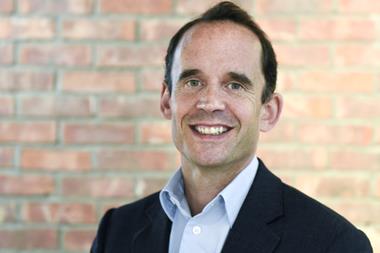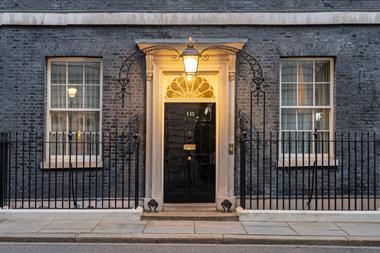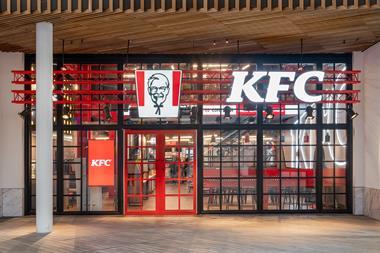Significant changes to the way the planning system treats pubs, as part of the Neighbourhood Planning Bill, come into force later this month. Here, British Beer & Pub Association chief executive Brigid Simmonds explains how operators will be affected.
I have recently been clearing through old files, some of which related to my time as Chief Executive of Business in Sport & Leisure. When doing so, I came across a consultation issued by the Department of Transport, Local Government & the Regions (DTLR) published in 2002, on possible changes to the Use Classes Order.
It included proposals to split Use Class A3 into three, due to the growth of what they privately described as ‘vertical drinking establishments’ and the ability of restaurants to become pubs without requiring planning permission.
The result was the creation of the new A4 Class for ‘Drinking Establishments’ (including pubs), which could become restaurants without requiring planning permission. However, the old A3 use (restaurants and café’) could not do this in reverse. The ability for both A3 and A4 to change into shops or offices without planning permission, was retained. A5 became takeaway premises.
It is perhaps a truism that the market moves much faster than most legislation! I remember well discussions with officials at the same Department and their view that it would be a good idea to block the development of multiplex cinemas! Fast forward fifteen years and the same might also be said of pubs.
The smoking ban has changed the pub market so much. Instead of concerns about wet-led pubs, we now serve a billion meals a year and the competition is often with casual dining. Instead of worrying about the growth of ‘vertical drinking establishments’, many community pubs have closed as consumer demand has fallen.
Yes, we have some very successful wet-led pubs, often selling a much wider range and choice of beers, but decreased footfall means that some pubs are no longer viable.
In places where the demand for more housing is huge alongside the growing trend for smaller local supermarkets, some have argued that it is just too easy to close a pub and sell it for an alternative use. Many others would argue that fighting the market is unhelpful, and could create a blight of closed, uneconomic pubs (which already exist in some areas), which need to find an alternative use. I am not sure that increasing costs for pubs somehow makes them perform better!
The introduction of the Asset of Community Value (ACV) legislation in 2012 offered some protection for pubs and an ability for the local community to buy the pub and often run it themselves. Some fifty percent of all assets covered by this legislation are pubs. However, many pub owners had real concerns about how the legislation was being used. The evidence ‘test’ to list a pub as an ACV seemed open to little challenge and many owners received letters from their local authority saying ‘congratulations’ when they had no intention of selling the pub for any other use.
An unintended consequence of ACV listing has been the effect on the value of the property. In some cases it was seen by banks as a reason to charge more for loans. In 2015, the legislation was further strengthened by a requirement for pubs which were ACVs to apply for planning permission for a change of use. Again, a restriction in flexibility was not welcomed by many and was particularly hard on the 18,000 pubs owned by individuals, particularly if the pub was their only major asset.
Now, we have another change through the Neighbourhood Planning Act, which received Royal Assent on 27th April, as part of the ‘wash-up’ stage of the last Parliament. The Department of Communities and Local Government (DCLG) managed to publish Secondary Legislation which comes into effect on 23rd May.
I must admit that I was surprised to find how complicated planning law had become. When the first change was made to the A3 Use Class Order in 2005, the General Permitted Development Rights which underpinned this were relatively simple. Now, they run to some 150 pages. As part of these complicated powers, some local authorities, namely the London Boroughs of Wandsworth and Southwark, have also made use of what are called Article 4 Directions.
In these boroughs, all pubs are required to apply for planning permission even for minor alterations. So, if you wish to paint the outside of the pub or put up a new fence, you need planning permission. This may protect the status of the pub, but it also increases their costs. Under the new regulations of the Neighbourhood Planning Act, these Article 4 Directions remain in place, but BBPA will be writing to both Authorities asking them to review their use in the light of the change in legislation.
So where does this leave pubs now? Whilst BBPA and our members remain concerned that there is a loss of planning flexibility for pubs, the solution which DCLG officials worked on (with us), will hopefully bring clarity and a better understanding for all.
An amendment which was initially rejected in the Commons, but passed in the Lords, created what is called a ‘Sui Generis’ (in a class of its own) for pubs. We had concerns however, that since many pubs are food-led, the distinction between the A4 use class (drinking establishments) and A3 (restaurants and cafés) is blurred. If the pub increased its food offer, would that mean that it had to apply for planning permission?
The solution eventually agreed upon, is much better. The legislation does not introduce a new use class. Instead it removes the rights of A4 drinking establishments (including pubs) to change their use to shops or full restaurants without planning permission, or indeed to be demolished. It does however, create a new development right for pubs (A4) to expand their food offer beyond what might be considered ancillary, without planning permission and there is no requirement to apply for planning permission for minor alterations. Under the legislation, the requirement for pubs covered by ACVs to apply for planning permission and the complicated 56-day notice period is also removed.
There are some technical transitional arrangements to consider, but in essence, all the changes come into force on 23 May. BBPA will be writing to any local authority which has an Article 4 Direction to ask them to re-consider (there is a requirement to review such Directions under the legislation, although with no prescribed timetable). We will also be writing to the Mayor of London, who in a recent consultation on the Night Time economy has suggested that London Authorities consider using Article 4 Directions.
We will be pointing out that this suggestion has been overtaken by the new legislation and that asking pubs to apply for planning permission for minor alterations is costly and adds bureaucracy and red tape. Finally, CAMRA has agreed that it will no longer provide support for the local listing of pubs as ACVs, unless there is a real concern that a particular pub is going to be sold for alternative use.
What will be the long-term impact on the market? All pubs will require planning permission for change of use or demolition. By its own admission however, the Government say that 90% of pubs require planning permission for either of these things anyway. The less than ideal use of ACVs as an artificial mechanism will cease. Whilst there is some loss of flexibility as against the casual dining market, a cleaner, clearer protection for pubs, with local engagement of communities where appropriate, is acceptable to all.











































